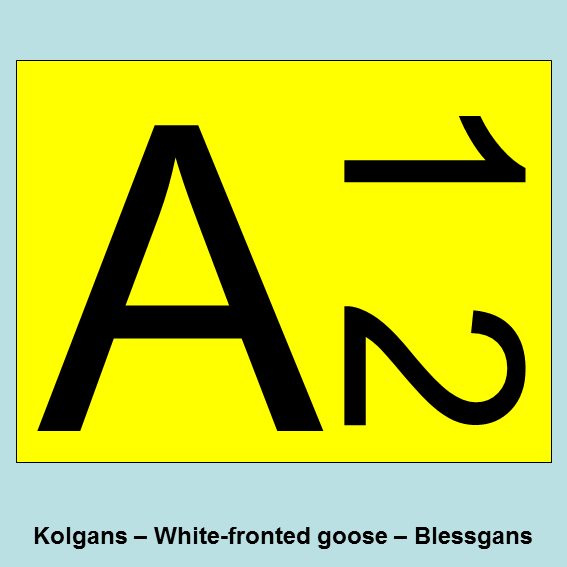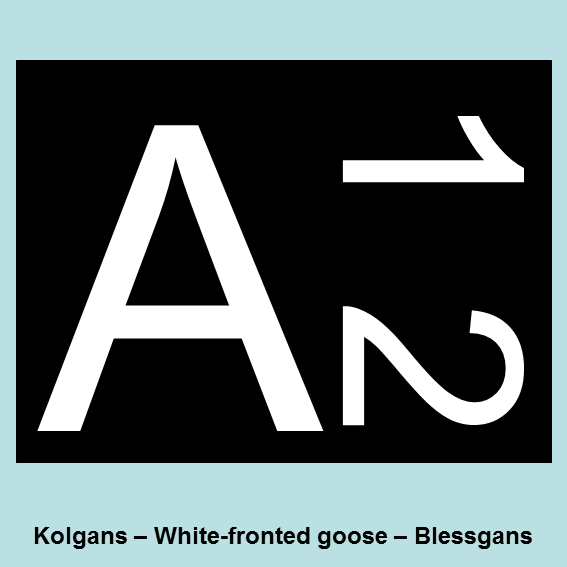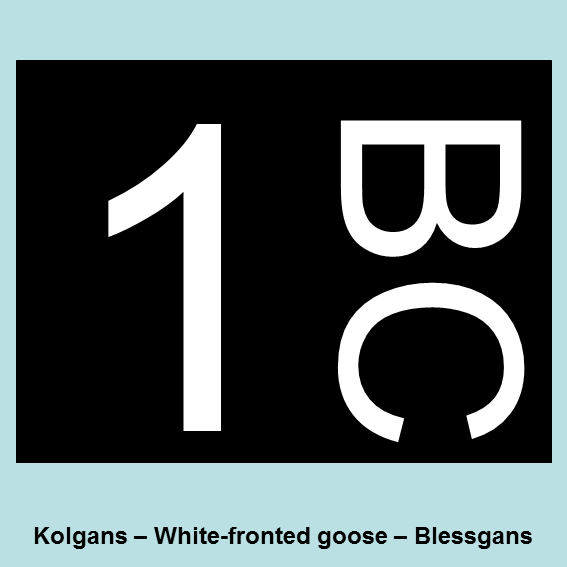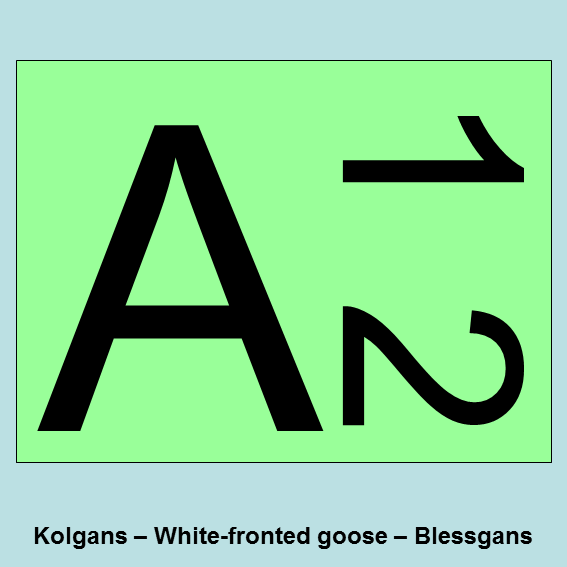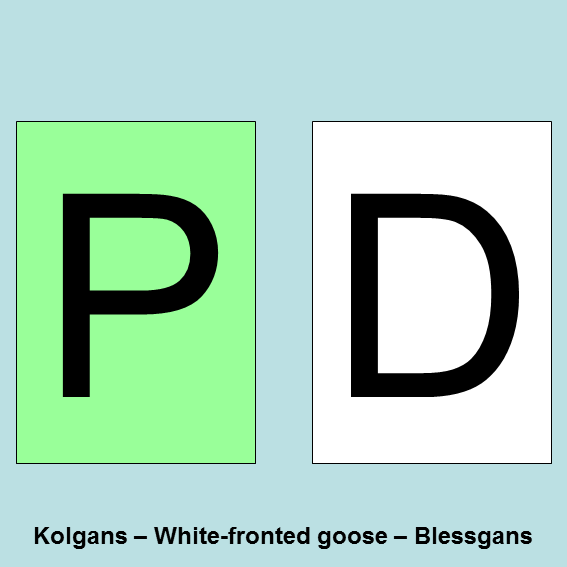As a follow-up of projects in former Eastern-Germany and in Siberia, many Greater White-fronted Goose have been ringed from 1998 onwards. Ringing is carried out in cooperation between Helmut Kruckenberg and Alterra and most birds are trapped by traditional Dutch goose catchers, mainly in The Netherlands, but also accidentally in Germany and Hungary. Besides, birds have been ringed at the island of Kolguev in Russia (breeding birds) and on the Taimyr peninsula (mainly moulting birds). Neckbands are usually black or limegreen (small number also yellow) and have a 3-digit code of which the latter 2 are placed in a 90° angle. Note that with codes that have one 'large' digit and two smaller digits in 90° angle, always the 'large' digit should be entered first, followed by the 2 smaller digits that are placed in 90° angle, e.g. 1AA. Do not use space when entering the code. Colour of the neckband is selected in the dropdown menu.
The Greater White-fronted Goose is the most abundant goose wintering primarily in the Netherlands, Germany and Belgium and in smaller numbers also in England. Major numbers are found in Emsland (Germany), Friesland (NL), Niederrhein (Germany), along the Rhine and IJssel rivers (NL), in Zeeland (NL) and in Flanders (Belgium). Read extra information for German observers.

Greater White-fronted Goose with a black neckband GU3 (photo: Kees Koffijberg)
Note to observers in Flanders
The network of Flemish observers is encouraged to use the predefined sites as outlined by Eckhart Kuijken and Christine Verscheure. They supply all Flemish observers with detailed maps and centrally store all their observations which are then added to our joint database. This enables Flemish observers also to check out their ’own’ birds through this website. A list of these sites can also be found after clicking on the relevant button.
Also the possibility to update one’s old data later on through this website exists for Flemish observers.
